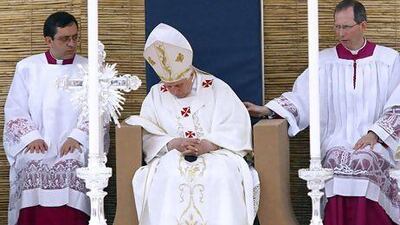Pope Benedict XVI shocked the world by announcing the extremely rare move of a pontiff stepping down. At the end of this month, he will quit his role leading the Catholic Church. He honourably admitted that he did not have the strength in mind or body to lead.
Upon hearing his reasoning, it brought to my mind another type of patriarch, the patriarch in business and specifically, the founder of the business. And wondering: when is it time to hang up the keys and pass the leadership of the business to another?
This predicament is universal as many organisations have septuagenarian and octogenarian leaders. Examples of publicly traded companies that fall into this category include Ralph Lauren, whose founder is 73; Berkshire Hathaway with Warren Buffett at 82 and his vice chairman Charles Munger at 89; News Corp with Rupert Murdoch, who will be 82 next month; and Viacom with chairman Sumner Redstone, who will be 90 in May.
Of course, across the Arabian Gulf region, the succession question is a continuing consideration with many of the titans of Arab business maturing in age.
While I am not advocating that we should witness a mass exodus from the boardroom, what became evident in the pope's announcement is that leaders need to be aware of their limits and prepared for the future. The senior leader has a responsibility to the organisation to know when his or her strengths and abilities are starting to fail.
In making this decision, the pope had to come to grips with the reality of going from reigning as leader to taking the title of "emeritus" followed by a change of name.
Letting go of control is hard for any leader to do. Any successful person is tempted to forget the reality of age and believe they are indestructible.
Easing Pope Benedict's decision may have been the Catholic Church's substantive succession programme. While there are numerous able-bodied men ready to step forward and take the helm, it is the system with centuries of proven track record that brought comfort to the pope during his time of contemplating stepping aside.
Succession planning is currently being talked about across the region but it is still a nascent practise. It is central to the sustainability of leadership.
As we look at the idea of succession, at the onset, let's avoid the all too common trap of only thinking of succession for the chairman or chief executive role. An equally great risk is the churn of leaders at the senior management and executive committee level. It serves any business well to have ready successors for positions even two levels below a place on the board.
To be successful in succession planning, we need to reduce the complications that come from vaguely understanding the process. In reality, succession planning is rather simple - it requires understanding exactly what is required from leaders at each level in an organisation.
For example, what is it that managing others or front-line leaders do from a leadership perspective? The answer is motivating, planning and allocating work and priorities, assessing contributions, giving and receiving feedback, and handling conflicts and problems. Then this determination is repeated for the remaining levels: leading managers, business leaders and enterprise leaders.
Once it is clear what leaders do at each level, develop those who show promise to exceed at a higher level. And then assess them to see if they are demonstrating future leadership in their current role. If so they should become a candidate for succession.
Pope Benedict's reality check is a reality check for all of us.
Tommy Weir is an authority on fast-growth and emerging-market leadership, an adviser and the author of The CEO Shift. He is the founder of the Emerging Markets Leadership Center

